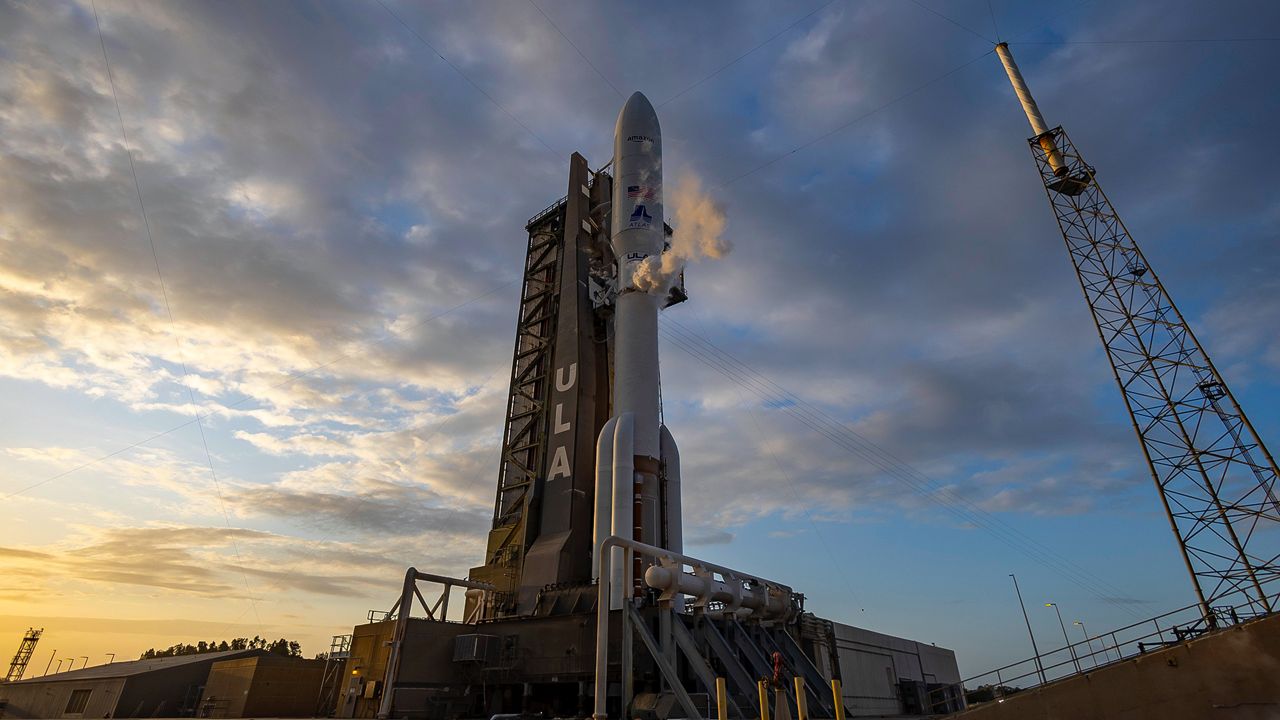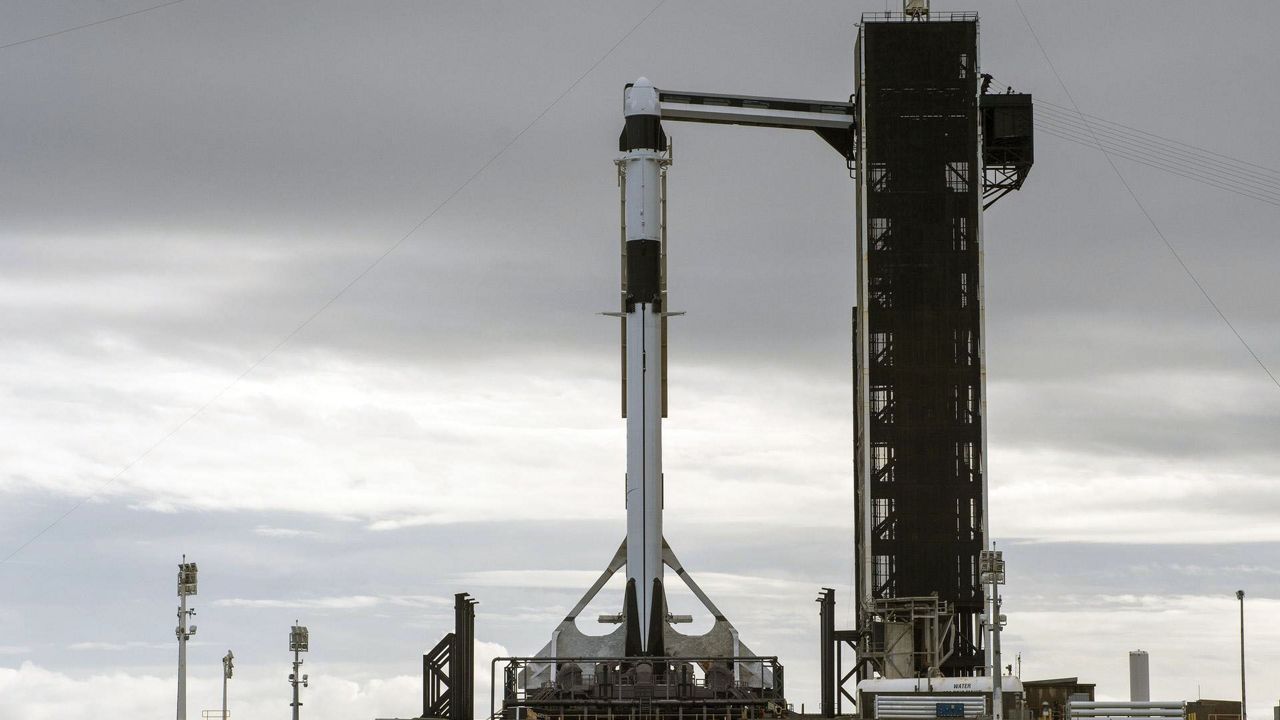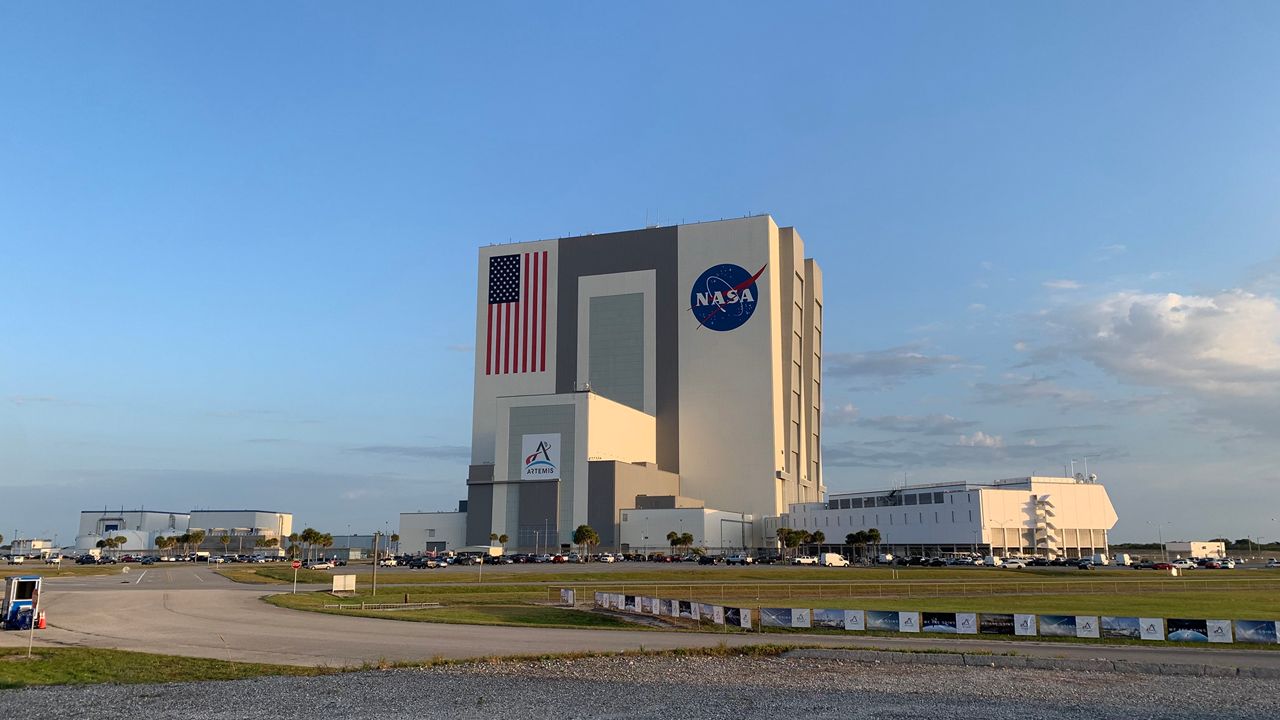CAPE CANAVERAL SPACE FORCE STATION — The United Launch Alliance was preparing its Atlas V rocket to take up Amazon’s Project Kuiper satellites on Wednesday night, but stood down due to weather concerns.
A new launch date is being determined.
What You Need To Know
- More than 30 Project Kuiper satellites they will be launched from Space Launch Complex-41 at Cape Canaveral Space Force Station
- RELATED coverage: Amazon's Project Kuiper set for first official launch on Wednesday
- Get more space coverage here ▶
- 🔻Scroll down to watch the launch🔻
The Atlas V rocket will take off with nearly 30 Kuiper satellites from Space Launch Complex-41 at Cape Canaveral Space Force Station, stated ULA in a press release.
The launch window opened Wednesday, with a T-4 minute hold at 7 p.m. Due to weather concerns, T-0 has been continually pushed back. The launch has now been scrubbed on Wednesday.
Originally, the window was going to open at noon.
On Thursday morning, ULA CEO Tony Bruno posted on X that a new launch date is being worked on.
Mighty Atlas’ count was very clean.
— Tory Bruno (@torybruno) April 10, 2025
Unfortunately, weather stayed rough. Appreciate support from the USSF Weather team.
The back up window of today is no longer available on the Range.
Working with them for the next available opportunity
The Bruiser is champing at the bit
Unlike SpaceX’s Falcon 9 rockets, the 196-foot Atlas V rocket’s first-stage booster will not be landing on a droneship or landing zone. Instead, it will be jettisoned and fall into the Atlantic Ocean, where it will be picked up.
About the mission
Amazon is trying to be like SpaceX and launch their own communications satellites. SpaceX has thousands of its Starlink satellites orbiting the Earth.
But with this official launch of its 27 satellites, Amazon will kick off a “catch up” mission against SpaceX.
“Project Kuiper will deliver high-speed, low-latency internet to virtually any location on the planet, and we expect to begin delivering service to customers later this year. Our first-generation satellite system will include more than 3,200 advanced low Earth orbit satellites, and we’ve secured more than 80 launches to deploy that initial constellation, with each one adding dozens of satellites to the network,” stated Amazon.
Once the satellites have been deployed from the Atlas V rocket, they will do a series of automated steps to get to their assigned orbit of 392 miles (630 kilometers).
The 27 satellites will then travel at more than 17,000 miles per hour (27,359 km per hour) as they orbit our little round Earth about every 90 minutes, explained Amazon.
Amazon shared what the future holds for its satellites.
“Over the next few years, Kuiper and ULA teams will conduct seven more Atlas V launches and 38 launches on ULA’s larger Vulcan Centaur rocket. An additional 30-plus launches are planned across our other launch providers: Arianespace, Blue Origin, and SpaceX,” it stated.
In a seperate press release from 2024, Amazon also shared, "Thanks to a new distribution agreement, DIRECTV Latin America and Sky Brasil—part of Vrio Corp.—will use Project Kuiper’s low Earth orbit (LEO) satellite broadband network to offer connectivity services directly to households across Argentina, Brazil, Chile, Colombia, Ecuador, Peru, and Uruguay."
ULA launched two prototype satellites for Project Kuiper in 2023.










